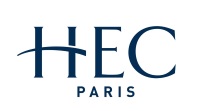No 1194: The Timing of Resource Development and Sustainable Competitive Advantage
Gonçalo Pacheco-de-Almeida () and Peter B. Zemsky ()
Abstract: We develop a formal model of the timing of resource development by competing firms. Our aim is to deepen and extend resource-level theorizing about sustainable competitive advantage. Our analysis formalizes the notion of barriers to imitation, particularly those based on time compression diseconomies where the faster a firm develops a resource the greater the cost. Time compression diseconomies are derived from a micro-model of resource development with diminishing returns to effort. We use a continuous time model of the flows of development costs and market revenues, which allows us to integrate strategic and financial analyses of firm investment problems. We examine two dimensions of sustainability: whether the resources underlying a firm's competitive advantage are economically imitable and, if so, how long imitation takes. Surprisingly, we show that sustainable competitive advantage does not necessarily lead to superior performance. We find that imitators sometimes benefit from reductions in their absorptive capacity and that innovators should license either all or none of their knowledge. Despite recent criticisms, we reaffirm the usefulness of a resource-level of analysis for strategy research, especially when the focus is on resources developed through internal projects with identifiable stopping times.
Keywords: Sustainability of Competitive Advantage; Imitation; Timing of Resource Development; Absorptive Capacity
37 pages, First version: November 1, 2006. Revised: March 24, 2017.
Full text files
papers.cfm?abstract_id=2025458Full text
Questions (including download problems) about the papers in this series should be directed to Antoine Haldemann ()
Report other problems with accessing this service to Sune Karlsson ().
RePEc:ebg:heccah:1194This page generated on 2025-06-10 11:14:56.

